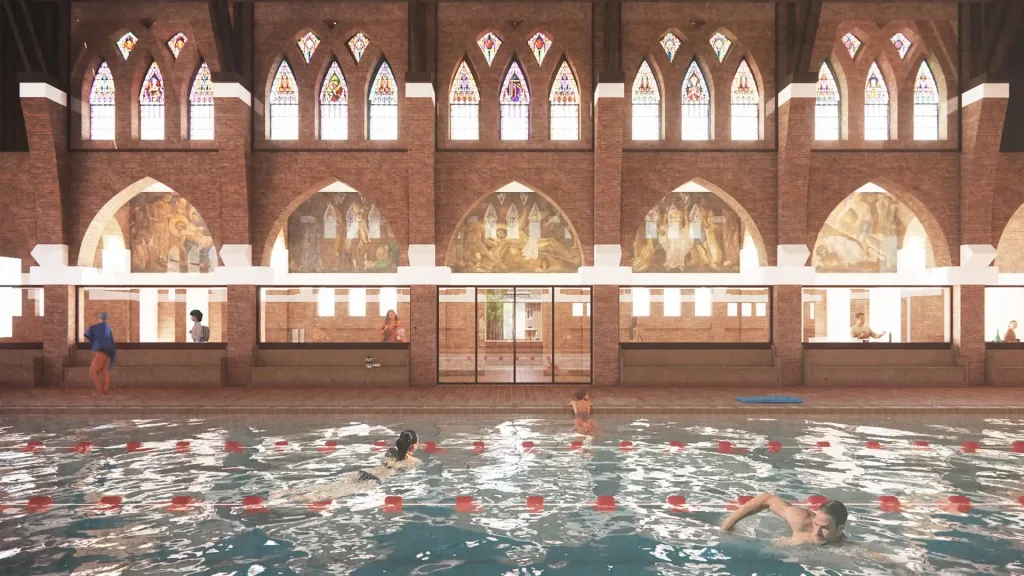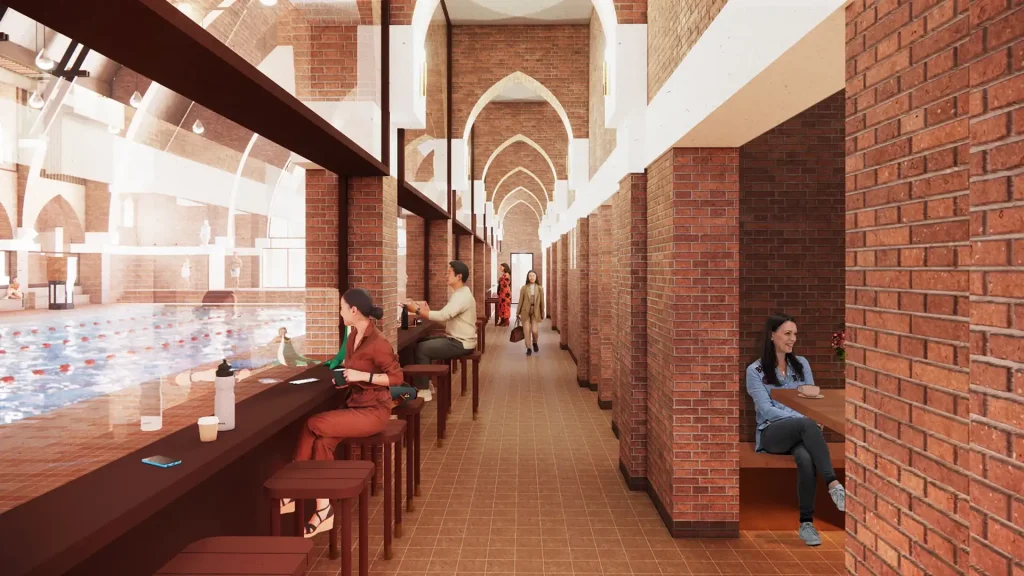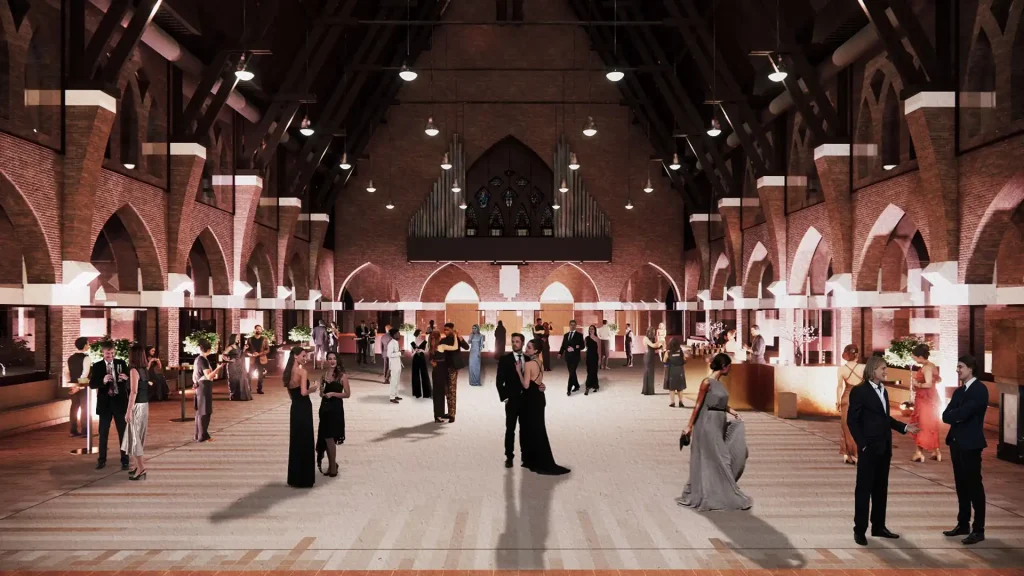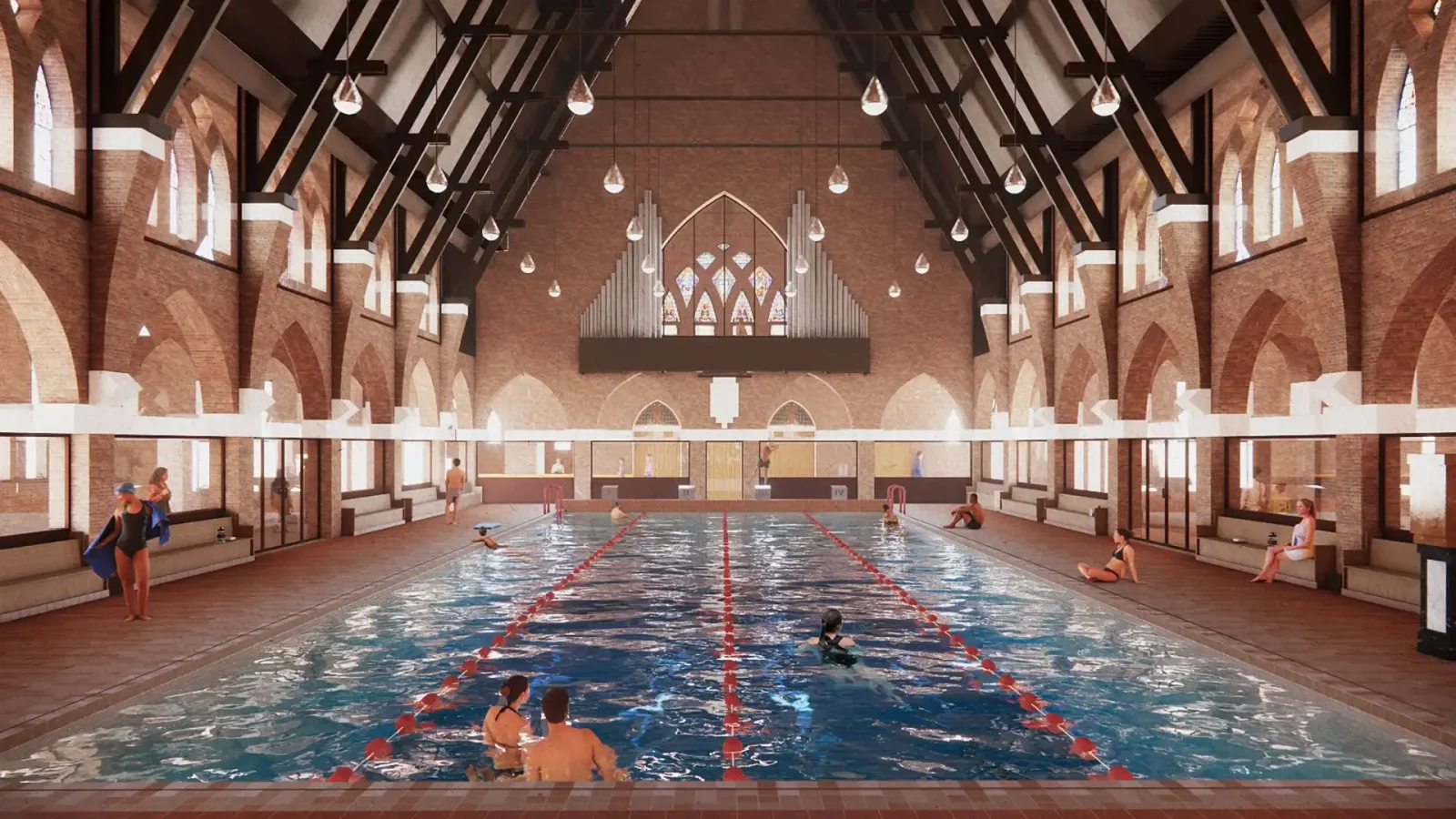MVRDV and Zecc Architecten have won the competition to transform the St. Francis of Assisi Church in Heerlen, Netherlands, into a public swimming pool, aptly named “Holy Water.” The design preserves the church’s historic elements while introducing a dynamic new function, giving the vacant building a renewed social role. The project offers a solution to the growing demand for public swimming spaces in Heerlen, while maintaining the church’s iconic presence in the city center.

Originally built over 100 years ago, the church ceased hosting services in 2023, providing an opportunity for its adaptive reuse. The design features a flexible, adjustable swimming pool floor, which can be raised or lowered to accommodate different activities and provide access for swimmers of various ages and abilities. In its highest position, the floor can be completely raised, creating a flat surface that can be used for social and cultural events. Additionally, the pool area can be filled with a shallow layer of water, reflecting the church’s interior and creating the illusion of “walking on water.”

The entrance to the pool is marked by an illuminated circular canopy, which serves as a modern addition while referencing the church’s original design. Visitors enter through the church’s aisles, leading to changing rooms and a catering facility at the rear. Glass walls separate the pool space from the rest of the building, preserving the church’s historic architecture while allowing for a functional, contemporary design.

Old pews are reused in the design, with some incorporated into glass walls around the pool. These pews provide seating for swimmers on one side and function as bar tables for spectators on the other. The church’s pulpit is also repurposed as a lifeguard’s seat. The project features a new mosaic floor that ties into the church’s original aesthetic, incorporating local colors and references to Heerlen’s murals. Additionally, the lighting above the pool is inspired by historic church lamps, which double as lane guides for swimmers.

To address sustainability, the pool will be heated efficiently, and the church’s historical elements will be protected from humidity. The roof will be insulated, and the wooden structure will be retained, fitted with sound-absorbing panels for improved acoustics. The project team also focused on incorporating energy-efficient systems, with technical installations discreetly placed in the church’s basement.
Scheduled to open in late 2027, the Holy Water project promises to bring new life to a cherished landmark.





























Leave a comment